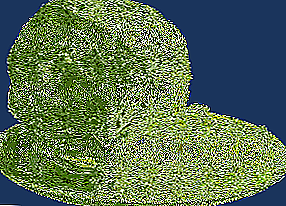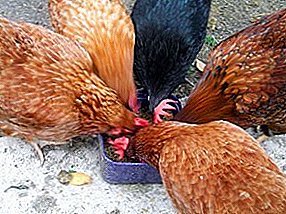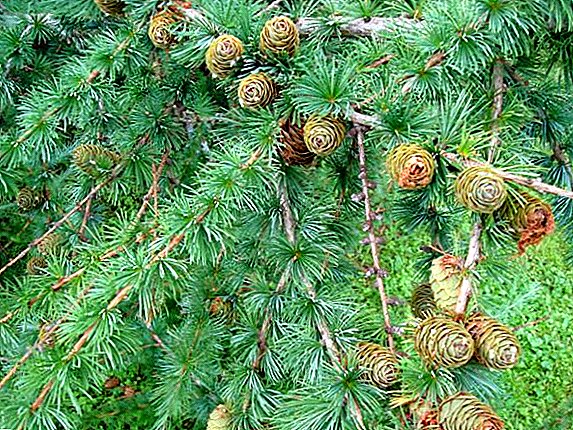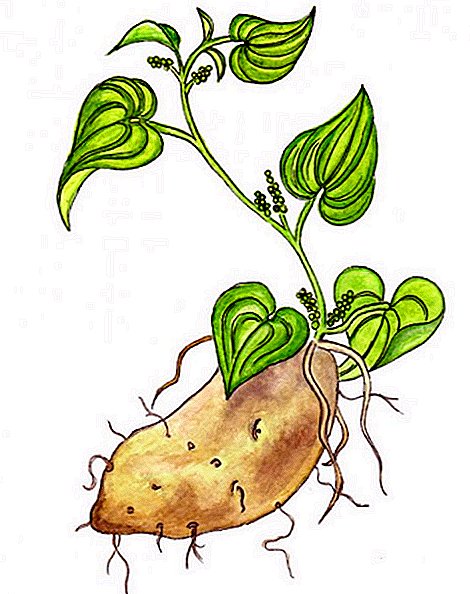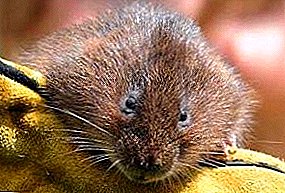
The earth (or water) rat is big trouble for any farmer or gardener.
Very often in the spring under the snow you can find not even rows of overwintered beds, but dug earth with many holes.
Rodent multiplies very quickly, and therefore some time after the appearance, begins to make raids on sheds and other ancillary buildings.
Appearance of a rat and a photo
The earth rat belongs to large rodents-wreckers, but actually is not a rat. In fact, it is a vole mouse, more precisely, the largest species of this family.
Animal has size from 16.5 to 22 cm (of which the tail is 6-13 cm) and body weight from 180 to 380 grams.
Body massive, with a large head and a dull face, small, almost invisible ears. The tail is round, long, covered with fine hair.
In winter, the coat is thick and long, in summer it is short and sparse. Rat wool is different in appearance, living in different habitats or of different ages.
Back coloring - dark brown, with a variety of shades, belly - off-white color. Sometimes there are completely black animals.
The toes on the front paws are short, ending with long, slightly curved claws. The hind legs are elongated. Swims well.
Bright photos of the earth rat:





Distribution and reproduction
The earth rat can be found in the European part of the country, in the Caucasus, in Siberia (except for the regions of the Far North). A large number of rodents is concentrated in the south of Siberia and in Central Asia.
For life picks wet places - along the banks of reservoirs, marshes and wet meadows. With a high population size can inhabit the gardens, fields and gardens.
During the floods migrates, moving to drier and more comfortable places to live.
In southern regions, under comfortable conditions, the earth rat can breed throughout the year. In other places, the process takes place from spring to autumn, two or three times.
The number of individuals in the offspring depends on the lifetime of the animal - the older the female, the more cubs can bring. The offspring is displayed under the ground, in a separate equipped place.
When they reach the age of one month, the young begin to live independently.
In optimal conditions, the number of earthen rats grows several times, and their number can reach 400 animals per hectare fields.
Lifestyle
 Rodent showing year round activityIn the winter, almost all the time is underground. By the time of day most activity is concentrated in the evening and at night.
Rodent showing year round activityIn the winter, almost all the time is underground. By the time of day most activity is concentrated in the evening and at night.
Climbs out of a hole only for a short period of time, departing for an insignificant distance - as a rule, while eating plants on the ground.
In the summer during the greatest heat and in the winter clogs burrows from the inside. The earth that arises when digging passages is thrown to the surface, forming small flat heaps of different sizes and at different distances from the exit point.
Underground passages are located 10-15 cm from the ground surface. The nest usually consists of an extensive network of labyrinths, a nesting chamber and several stockpiles.
Differences from other rodents
From the gray rat earthen different soft wool and a shorter tail without annular scales.
They differ from moles by smaller underground passages, which, moreover, have an irregular shape. Also, rats in winter do not hibernate.
The tracks are similar to the prints of gray voles, but have a large stride length - 6-8 cm.
Harm to a man-farmer and ways to fight
Breaking through the burrows, immediately eats up all the food encountered. The earth rat destroys alfalfa the most, and also causes significant damage to the rice during the ripening period, cotton, wheat, barley, some melons and gourds, including watermelon and melons.
 Also harm young trees, gnawing them underground at the root collar or seriously nibbling the bark - especially often "gets" bird cherry, apple trees, willow.
Also harm young trees, gnawing them underground at the root collar or seriously nibbling the bark - especially often "gets" bird cherry, apple trees, willow.
Eats small animals - field mice, crayfish, mollusks, insects and others. Cleverly swims and climbs treesby ravaging bird nests.
It may settle in human dwellings, where it eats food and feed. It can gnaw through the mud walls and make moves under the floor.
The natural enemies of the earth rat are dogs, cats, jackals, foxes, weasels and many other predatory species, as well as birds - owls, eagles, field moons.
Initially, all methods are divided into:
- Mechanical devices - this includes all kinds of traps, traps, scarers;
- Animals - a few cats in the area where earth rats live will not be able to overfill the entire population, but are able to scare off rodents and force them to leave their habitat;
- Chemical substances - spraying of poisonous gases is used: carbon monoxide, chlorine, or substances are sprayed on the soil, having licked that the rat will die.
Radical methods - traps and poisons are used when there is not much time to scare. However, it should be borne in mind that rats are intelligent animals, and will not fit the mechanism if they see that someone has died in it.
In addition, radical methods can also harm other animals and plants in the vicinity.
Humane methods involve rodent scaring:
- Ultrasonic Repeller - installation of ultrasound-generating devices at the site. It happens that some rodents do not react to it, and also adapt to a constant irritant;
- Smoking out - substances that produce a pungent unpleasant odor are placed in the holes. It may be burnt wool, bundles of wormwood or mint. One of the interesting exits is the landing on a section of black elderberry, the roots of which release cyanide into the soil, which is poisonous to rats;
- Filling holes with water - ground rats swim well, however, they will have to leave such a habitat.
IMPORTANT! There is no need to hesitate when finding an earthen rat on a site, how to get rid you must choose for yourself, but you shouldn’t let things take their course - the more time passes, the greater their population becomes, which means it will be harder to get rid of rodents completely.
Conclusion
The earth rat is a dangerous rodent that settles on the banks of rivers, swamps, and also in vegetable gardens and fields. He lives underground, where he digs labyrinths.
Destroys landing rice, barley, wheat, cotton, young trees. Methods of dealing with a rodent are diverse, and are divided into radical (traps, poisonous gases and bait) and humane (repellers, damage to burrows).



